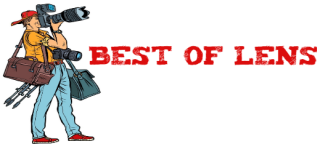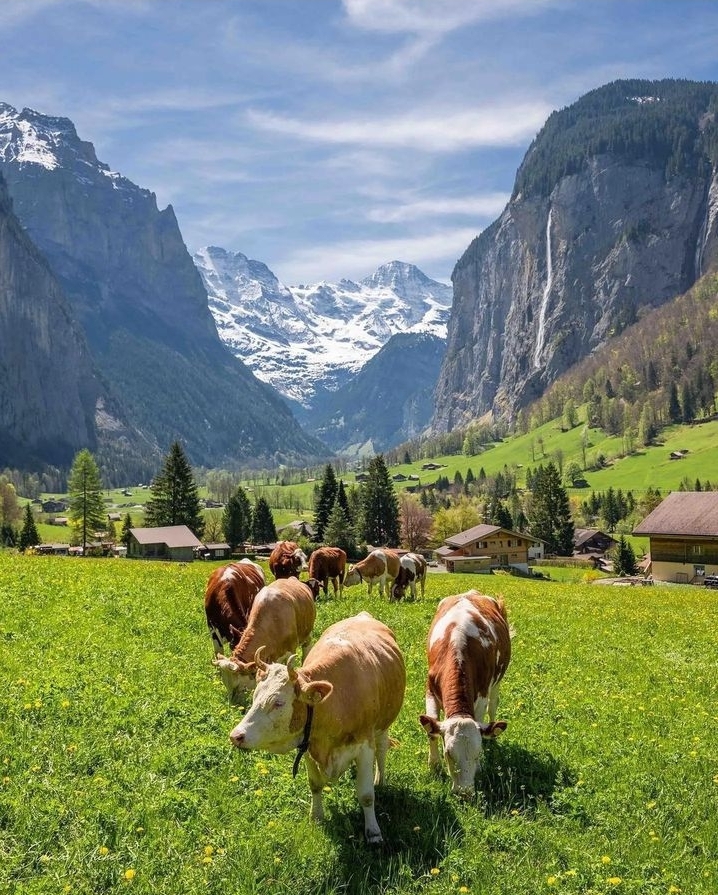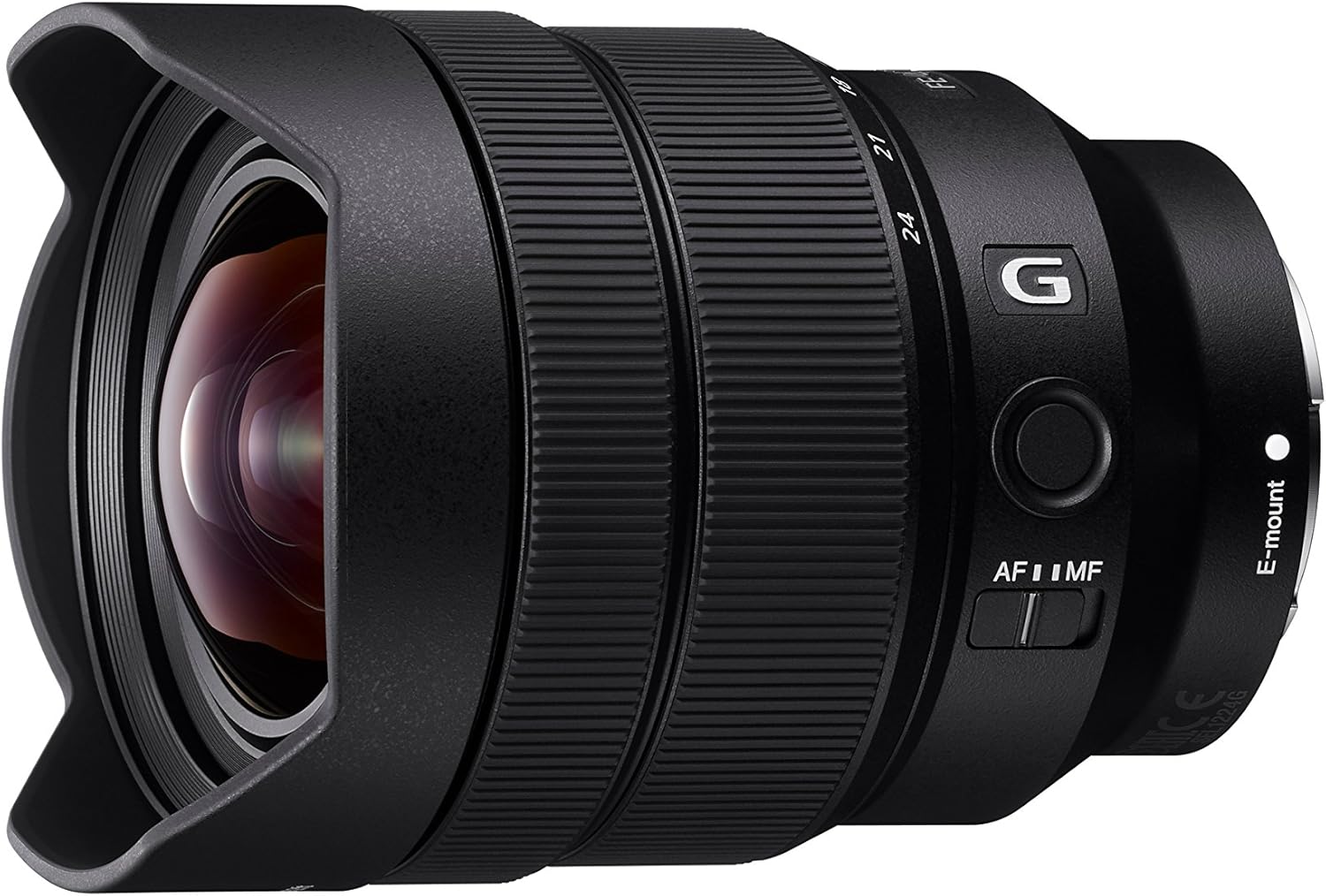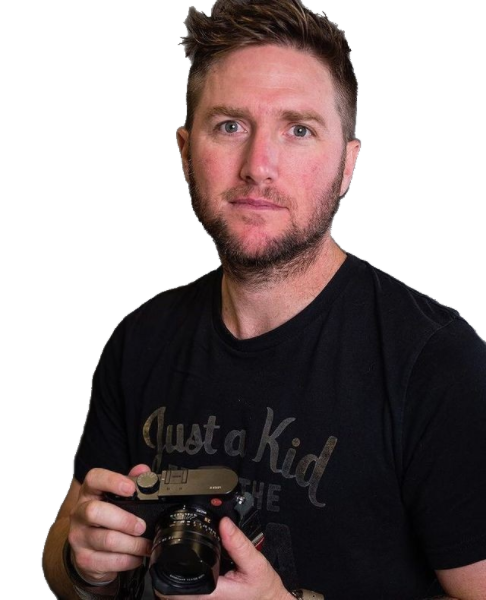Last Updated on January 22, 2024 by Sharon Advik
I get questions from time to time, not 1000s of them, but I get a question about what lenses I use for landscape photography.
What does my lens lineup look like, and what do I recommend?
Well, this is my entire lens lineup for the Sony A7iii.
These are the 6 best landscape lenses for Sony A7iii that I recommended to you.
Let’s drive in:
Which is the best landscape lens for Sony A7iii?
Here are my recommended top 6 best landscape lens for Sony A7iii:-
Sony 16-35mm F4: (Best Landscape Video lens for Sony A7iii)
It’s quickly becoming one of my favorite lenses.
That was pretty crazy; it does make a super good video lens, especially when you’ve got a lovely wide landscape to show people or maybe a cityscape or architecture.
It also makes a super good vlogging lens.
This is nice because it’s super wide.
I can hold it closer to my face, and it will be able to get more in the frame behind me, so it looks super good.
I’ll probably be using it more for actual vlogging than I will for shooting quote-unquote cinematic footage, but the main reason I purchased this lens is to use it as a landscape photography lens.
I love the wide focal length.
It makes your epic landscapes look even more epic, so I will probably use this lens for landscape photography, vlogging, and cinematic videos.
Photography is the main reason why I bought this lens.
The 16 to 35 comes in handy, and I feel like it makes those epic landscapes look a lot more epic.
On the 35 millimeters, you can still shoot your portraits, close-ups, details, and other things without changing lenses.
I think this is an excellent all-around lens.
Even though it is only f4, you still get an excellent shallow depth of field when you zoom in to 35 millimeters.
This is a Zeiss lens, and I think Zeiss has some of the best build quality on the market.
So, I think you guys will like the build quality of this lens.
It’s nice and weighty and feels super good in your hands, and overall, I think you guys will be satisfied with how this lens is built.
The sharpness of this lens is incredibly sharp.
But keep in mind, if you’re shooting wide open at F4, it may not be quite as sharp, but that’s to be expected.
Most lenses aren’t at their full sharpness when shooting wide open.
So, I’ll continue to use this lens, and I like it and find myself using it a lot.
It’s a super good lens for landscape and vlogging and perfect for those wide cinematic shots.
Sony 16-35mm F2.8: (Best Landscape Wide-angle lens for Sony A7iii)
This lens is amazing, which comes as no surprise because it’s such an important lens; it’s one-third of the Holy Trinity.
So, let’s start with the physical build of this lens.
This lens is built exceptionally well; it’s weather-sealed, and considering its build quality and size, it’s a little bit lighter than you’d expect, coming in only at 680 grams, like other Sony lenses.
It features a custom button on the side, which is always lovely.
It also has an AF MF switch so you can switch it on the lens itself and don’t have to dig through the menus.
Unfortunately, this lens does not zoom internally; it protrudes and zooms out to 16 millimeters.
As a prime guy, I always assume that it means it’s going further when you zoom, so I assumed we’d be going from 16 to 35.
However, zooming out on this lens goes from 35 and then protruding to 16 millimeters, which is a little bit weird.
There is no stabilization in this lens, which is not uncommon in Sony lenses because of their in-body image stabilization; that’s what they’ve been focusing on, and I get it.
It means that the lens can be smaller and lighter, but it would have been nice to have it in this lens.
Now, on to the IAF test; this lens performs very well when tracking my eye.
No surprise there, as it is a G master lens; I was incredibly impressed with how well it tracked me, even on the very edges of the frame.
When it comes to photos, this is an ultra-wide standard wide lens.
So it is no surprise that there’s a bit of distortion; on the wide end, we get a bit of barrel distortion, and on the long end, we get a bit of pincushion distortion, which are both easily fixed by applying lens corrections.
I wouldn’t recommend this lens as a portrait lens, but you can take some cool wide-angle epic portraits.
These will be more environmental portraits because this lens is not meant for up-close portraiture, but you can get some different shots with this lens.
The corner sharpness is excellent on this lens, one of the best I’ve seen, which I know is very important for many people looking to buy this lens.
So, it’s only noticeable when your subject is up close, and there is some separation from the background.
When I’m close to the lens, it has a much easier time picking up on me and tracking, like when I pop back into the frame, catching me almost instantly and then tracking me to the edge.
So, if you want to be a YouTube vlogger, the 16 to 35 is the quintessential vlogging lens.
Every prominent YouTuber uses it because it’s so cinematic with that wide 2.8 aperture; it looks so good.
However, the weight of this lens is very noticeable, and your arm will tire quickly because it is so heavy.
Another downside of this lens is that it is not stabilized, so you’re not getting shake-free footage with this vlogging lens, which is unfortunate.
However, since it’s so wide, it also does not show the shake as much as other tighter lenses, which is helpful since it doesn’t stabilize.
So, what are my overall thoughts on this lens?
It’s an absolute beast. You’re going to love it.
Samyang 14mm F2.8: (Best Beginners Landscape lens for Sony A7iii)
That is a big piece of glass.
The build quality of this lens feels basically the same as the other Samyang lenses I’ve tried, and it doesn’t have any buttons or anything else on the lens except for the ring that we call the focus ring.
The lens is made out of metal.
You can’t remove the lens hood because the whole glass element is fused with the lens hood, and there’s also no option to put a filter on because this lens doesn’t have a filter thread, so that’s a bummer.
I wouldn’t say it’s a light lens, but it doesn’t feel that heavy, either.
But it will be a little bit front-heavy when mounted to your camera.
However, considering the wide focal length and aperture, it is a small lens.
The focus ring on this lens is one of the best I’ve tried for the Samyang lenses, and it feels smooth.
It is also exact and doesn’t do this weird nudging thing.
It is soft when shooting it wide open at 2.8, but if you stop the lens down to f4, it gets sharper, and the most sensitive sweet spot of the lens was somewhere around 7 or 8 when I tried it out.
Shooting indoors or like huge landscapes can give you some nice blurred backgrounds.
But since it’s like such a wide lens, you got to be, hold down close to your subject to get that blurred-out background, but I went out and shot some portraits, and they turned out good.
The autofocus is quick and accurate.
But you probably won’t shoot portraits with this lens, and the video performance of this thing is okay.
This lens is mainly aimed at landscape photographers, interior photographers, and maybe even some Astrophotography.
And even though it has a couple of weak points, I would say this is a great lens to start with if you need a wide-angle lens with a wide aperture.
Sony 24-105mm F4: (Best Lightweight Landscape lens for Sony A7iii)
I can tell you from the start that this baby is amazing.
If I could only have one lens, it would pick up the 24 to 105, especially when you’re on the run and have no time to change lenses.
This lens offers an excellent range going from 24 to 105.
You will lose a stop of light, but shooting with the Sony A7iii offers good low-light capabilities, so using f4 won’t be a big problem.
I have taken this lens with me to shoot landscapes.
The constant f4 aperture makes it easy to use in video mode because I don’t always have to adjust my exposure when changing the focal length.
The autofocus works nicely when shooting in good lighting conditions and is fast, silent, and accurate.
I love shooting videos with this lens.
The lens produces a very sharp and beautiful image, and with the aperture f4, you can get some nice bokeh in the background when zooming in with the lens.
Now, the f4 aperture won’t give you that 1.8 shallow background, but I still like the F4 of it for my preference.
When holding the lens in my hand, I feel the build quality will be solid and plastic.
The focusing and zooming part is made of a rubber ring, which gives me better control and feels lovely when gripping it.
The lens is also partly weather seals, which makes it suitable for traveling.
Now, you will find one switch for controlling the focus mode and the other switching for image stabilization on the lens’s side.
The image stabilization does a great job.
The cool part of this lens is that it has a custom button on the side, which can be very handy; I have my custom button set to manual focus.
So whenever I press and hold the button, it will set to manual focus when I release it and switch back to autofocus.
This is handy when I want to create a revealing shot, not focusing on my foreground.
You could also use that lens on the Sony A7iii since it offers a super 35-crop mode.
It offers a very nice bokeh, is relatively lightweight, and has a good range when shooting on the run; I can’t say anything wrong about this lens.
Sony 85mm F1.8: (Best Landscape Focal Length for Sony A7iii)
We all love 85-millimeter lenses.
The more expensive Zeiss lens offers slightly more excellent build quality and image stabilization in the lens.
The F 1.4 G master lens has a brighter maximum aperture, whereas the size and the price of this FE, the F 1.8 lens, are a bit more insane.
It doesn’t feature image stabilization, but then again, Sony’s newer cameras have it in body image stabilization these days, so that’s got you covered.
Fast-aperture 85-millimeter lenses are trendy; they are generally sharp and even less expensive.
Their shorter telephoto focal length and the wider maximum apertures lens them to portrait and subject photography event photography.
Also, I’ve always found 85 millimeters to be an excellent focal length for landscape photography.
It may be Sony’s least expensive 85-millimeter option, but its build quality is lovely.
It’s made of metal and feels solid with a nice brushed-painted finish.
Many Sony lenses must be switched between manual and autofocus within your camera.
Still, this lens has a dedicated switch and a side button, which allows you to hold your focus point while shooting in autofocus mode, a feature I sometimes find pretty handy.
Focusing turns smoothly; it’s electronically coupled to the lens’s focus motor but works responsively.
The autofocus motor is not very fast but works silently and accurately.
The lens comes with a standard lens cap and an excellent hood. All in all, its build quality is simple but quite classy.
The image quality is simply brilliant.
And finally, the essential thing in many people’s minds is Bokeh.
85-millimeter f 1.8 lenses can give you pretty out-of-focus backgrounds, and in all my sample pictures, I found the background blur to be friendly and smooth.
It’s not the smoothest I’ve ever seen, but it’s nice and undistracted.
All in all, I was hugely impressed with the Sony FE 85-millimeter f 1.8. Everything about it is just fantastic.
For me, it’s built quality to its architects.
It’s not at its happiest on an APS-C camera, but fix it onto any of Sony’s full-frame cameras, even a 42-megapixel one, and you’ll be flying.
It offers a lot more than usual, as well.
So, I only keep saying that it comes highly recommended.
Sony 12-24mm F4G: (Best ultra-wide angle lens for Landscape Sony)
I’ve had this lens for a few years now, and it’s been a core part of my kit and has traveled around the world with me.
It’s 4.62 inches long and weighs only 1.2 pounds.
That’s light for an ultra-wide zoom that goes as wide as 12 millimeters.
The weight is distributed relatively evenly, and it’s not front-heavy at all.
Speaking of the front, the lens hood doesn’t come off.
And there’s no filter thread on the inside of this lens.
The construction of this lens is excellent, with rubberized zoom and focusing rays.
It has an internal zoom, which is always great to have; the body of this lens also features an AF mF switch and a customizable by Sony, which claims this lens is dust and moisture-resistant.
But there’s no rubber gasket on the back of this lens, which is surprising, even without this gasket.
This lens fits very snugly onto my A7iii, and I’ve shot with this lens in all kinds of rainstorms and blizzards, dripping wet under waterfalls.
And if I know the weather is terrible.
I have complete confidence that this lens is going to perform.
But even though this lens is pretty small for a super ultra-wide zoom.
Don’t be fooled by its size because, optically, this thing is incredible.
This is probably one of the sharpest super ultra-wide zooms ever used.
But sharpness isn’t everything. And there are a few downsides to this lens, which I will get into.
Distortion is one of the negative aspects of this lens; there is noticeable barrel distortion on the wide end, and you’ll get some pincushion distortion on the long end.
There’s also some vignetting and light fall-off in the extreme corners.
You would do this for an ultra-wide-angle lens, but the distortion is well-controlled and easily correctable.
I love the color reproduction and accuracy of this lens.
If you buy this lens, you will not be disappointed in its performance.
This lens is so fun to shoot; the kind of perspective you can get with 12 millimeters is unmatched.
When I go on location, I try to take unique shots, whether finding a different composition or shooting at another time of day.
I don’t want to take that shot that everyone else has taken.
This lens lets me be creative and get those crazy angles and crazy perspectives that not too many other people can capture.
So it’s a shame that most people go straight for the 16-35 G master and skip right over the 12 to 24 G because this is truly an underrated lens.
And if you know how to use that super ultra-wide-angle focal length. There isn’t a substitute.
CONCLUSION:
Alright, guys, that concludes all the lenses we will discuss today in this article.
Do you guys have any experience with these lenses? What are your thoughts on them?
Which is the best landscape lens for Sony A7iii?
Is there a lens I didn’t mention in this article that you love using for Sony A7iii?
Please leave your thoughts and comments below.
Related Posts:
4 Best telephoto lens for Sony A7iii: (2021 Guide & Reviews)
5 Best Budget Lenses For Sony A7iii:
4 Best Travel Lens For Sony A7iii:
I am a Professional and Certified Digital Photographer born in the USA. I have been in this field of photography for 22 years, and in these years, I have used many photography lenses and Cameras, which I want to share here on this website about my experience. The idea for Bestoflens.com is to provide honest information about different Lenses and Camera products in the format of a “Best lenses for AYZ” list. I want this website to be the last destination for people to pick the best Cameras and lenses to fit their needs. You can find our unbiased reviews here on Bestoflens.








